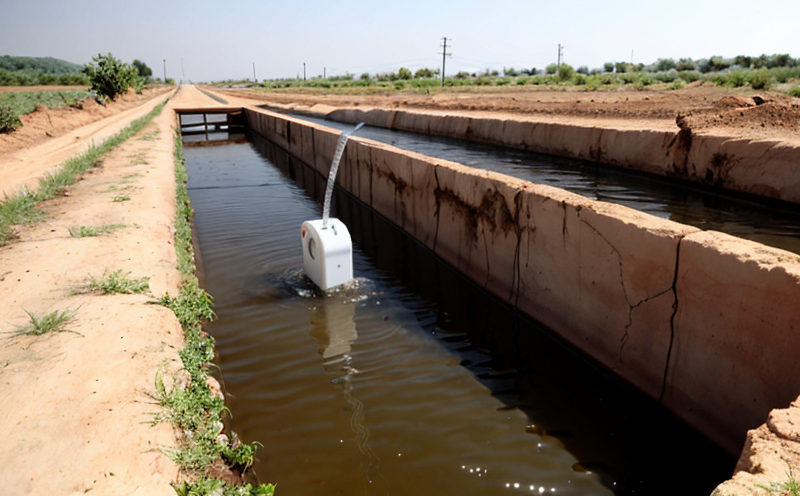EPA 200.8 Trace Elements in Water by ICP MS Testing
The EPA Method 200.8 is a widely recognized analytical procedure designed to detect and quantify trace elements in water samples with high precision and accuracy. This method specifically targets the determination of metals, metalloids, and other trace elements that can pose risks to human health and aquatic ecosystems.
Mining operations frequently generate waste streams containing various trace elements, which must be monitored and controlled according to regulatory requirements like EPA Method 200.8. The testing protocol involves several key steps: sample collection, preservation, digestion, instrumental analysis via Inductively Coupled Plasma Mass Spectrometry (ICP-MS), and data interpretation.
The primary goal of this testing method is to ensure that water samples from mining operations meet the stringent standards set by environmental regulations. By identifying even trace levels of harmful elements such as arsenic, lead, cadmium, and mercury, the laboratory can provide critical insights into the environmental impact of mining activities.
ICP-MS offers unparalleled sensitivity and selectivity for trace element analysis, making it an ideal choice for EPA Method 200.8 compliance testing. This technique allows for the detection of elements at parts per billion (ppb) levels, ensuring that no harmful contaminants are overlooked. The method’s robustness is further enhanced by its ability to simultaneously analyze multiple elements in a single sample.
The application of ICP-MS in EPA 200.8 testing involves several stages: first, the water samples are collected and preserved under appropriate conditions to prevent any chemical changes that could affect the results. Next, the samples undergo acid digestion to convert all forms of trace elements into aqueous solutions suitable for analysis.
Following digestion, the prepared samples are injected into the ICP-MS instrument where they are atomized, ionized, and then separated based on their mass-to-charge ratio. This process allows for the precise identification and quantification of each element present in the sample. The resulting data is analyzed and reported according to EPA guidelines.
It is important to note that the accuracy and reliability of results obtained through EPA Method 200.8 depend heavily on rigorous quality control measures and adherence to standardized procedures. Proper sample handling, accurate digestion methods, and calibration of the ICP-MS instrument are crucial factors in ensuring compliance with regulatory standards.
The importance of EPA Method 200.8 cannot be overstated, especially for mining operations where environmental stewardship is paramount. By adhering to this method, laboratories can help ensure that mining activities do not contribute to water contamination and subsequent ecological damage.
Applied Standards
| Standard | Description |
|---|---|
| EPA Method 200.8 | Determination of trace elements in water by inductively coupled plasma mass spectrometry. |
| ISO/IEC 17025:2017 | General requirements for the competence of testing and calibration laboratories. |
| ASTM D6984-16 | Standard test method for determining trace elements in water by inductively coupled plasma mass spectrometry. |
EPA Method 200.8 is a critical standard that mandates the use of Inductively Coupled Plasma Mass Spectrometry (ICP-MS) for analyzing trace elements in water samples. This method ensures consistent and reliable results, which are essential for regulatory compliance.
ISO/IEC 17025:2017 provides the framework for ensuring that laboratories meet international quality requirements for testing and calibration services. Compliance with this standard guarantees that our laboratory adheres to strict operational procedures, thereby enhancing the credibility of our test results.
ASTM D6984-16 further supports the accuracy and precision of ICP-MS analysis by offering guidelines specific to trace element determination in water samples. By following these standards, we ensure that all our testing protocols align with industry best practices.
Benefits
Compliance with EPA regulations for mining wastewater discharge.
Identification of trace elements at extremely low concentrations (parts per billion).
Accurate and reliable results using state-of-the-art ICP-MS technology.
Confidence in the integrity and safety of water samples from mining operations.
The ability to detect trace elements at such low concentrations is particularly significant for mining industries, where even minute amounts of certain metals can have substantial environmental impacts. The precision and reliability offered by ICP-MS make it an indispensable tool in maintaining regulatory compliance and safeguarding public health.
By leveraging EPA Method 200.8 and associated standards like ISO/IEC 17025:2017 and ASTM D6984-16, we provide mining clients with robust data that supports informed decision-making regarding water quality management.
Quality and Reliability Assurance
Adherence to ISO/IEC 17025:2017 standards for laboratory operations.
Use of advanced ICP-MS instrumentation calibrated regularly.
Inclusion of quality control measures in all testing procedures.
The quality and reliability of our EPA 200.8 trace elements water analysis are underpinned by strict adherence to international standards for laboratory practices and continuous calibration of our ICP-MS equipment. Regular internal audits ensure that every step of the analytical process meets established criteria, thereby maintaining the highest level of accuracy and consistency.
Our commitment to quality is further exemplified through rigorous quality control measures implemented throughout the entire testing procedure. This includes regular verification of method performance using reference materials and participation in proficiency testing programs recognized by regulatory authorities.





